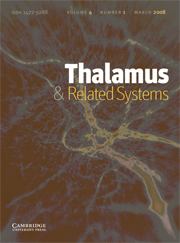Article contents
Studies of the human ascending pain pathways
Published online by Cambridge University Press: 11 October 2005
Abstract
Chronic pain is an immense, unsolved, clinical problem. Current approaches to this condition are limited by uncertainty about mechanisms of acute and chronic pain in humans. Although much progress has been made toward understanding peripheral neural mechanisms of human nociception, we have a poor understanding of CNS pain mechanisms. Here, we review the anatomy and physiology of the ascending spinal pathways and supraspinal centers with pain-related activity. This review focuses on the primate nervous systems because there are significant differences between pain transmission in primates and other species such as cats and rats.
- Type
- Review Article
- Information
- Copyright
- © 2005 Cambridge University Press
- 6
- Cited by


